A Look Inside the Home Décor Space
How we’re still changing where we live as much as how we live.
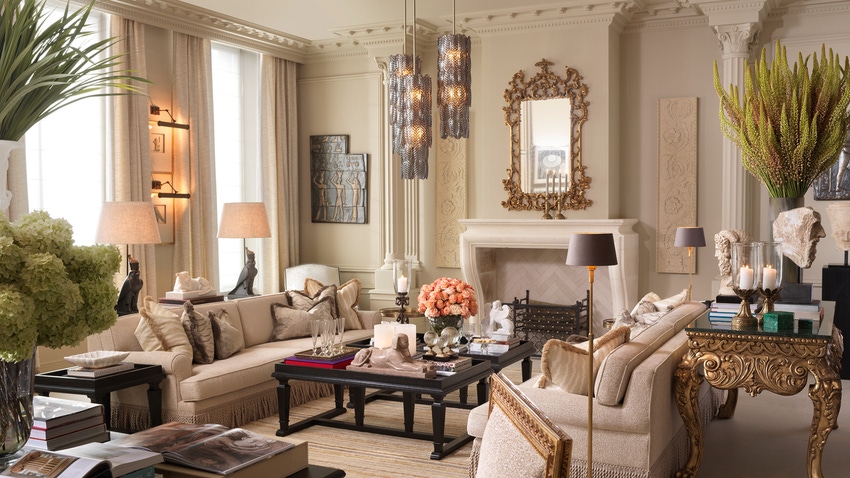
It’s hard not to recall the height of the pandemic when considering home décor. After all, COVID-19 changed people’s lives and altered the way many people looked at their living spaces. Lockdowns and social distancing forced people to spend extended time in their abodes.
For many, taking a long, hard look at their surroundings made them think much more about what they wanted and needed in a home. Remote workers began to rethink floorplans as they created workspaces where none had existed. Some families turned playrooms into classrooms; in other cases, basements became gyms. For some, it just meant beautifying and updating the spaces where they spent more time.
According to the International Association of Department Stores, the home and décor business fared well during the pandemic because consumers spent more on care, leisure and home-related products. As a result, the global market share of furniture, homeware and household appliances increased by 20% between 2019 and 2020, mainly online.

Throw from the The MET x Ann Gish collection.
Statista reported the pandemic had a generally positive impact on the global furniture market and the home décor segment, finding one of the significant drivers behind the growth in home décor was the shift in discretionary spending, as many people chose to focus more of their income on household spending vs. out-of-home spending. While there was a significant increase in home décor-related purchases, Statista found big-ticket items like beds and sofas saw the most growth. Décor experienced the smallest revenue percent change compared to other furniture market segments. In its 2021 annual report, Wayfair, one of the top retailers in online furniture and home décor, stated the shift in consumer spending was one of the main reasons for its lower sales in the second half of 2021 as consumers’ demand for home goods started to normalize.
Return to Normal?
Now that the pandemic is in the rearview mirror and people are resuming their lives more like before, what does that mean for home décor? And how has licensed décor fared?
Licensing International’s 2023 Global Licensing Industry Study, reporting on Global Sales Revenue from Licensed Merchandise and Services by Product Category, found home décor grew 7% in 2022. Home-related categories, including home décor (+1.4%), lawn garden/ hardware (+9.0%) and housewares (+7.5%), also cooled off after a very strong 2021 as consumers moved their focus to activities outside the home. The slowdown of the worldwide housing market in 2022 also contributed to slowing growth of home-related categories.
Finally, art showed below-market growth this past year at +3.6% as many of the product categories that art IPs work well with showed slower growth (e.g., home décor, publishing and paper Products).
But it’s not all darkness and gloom. Statista predicts this year, revenue in the home décor market segment worldwide will amount to an impressive $128.7 billion. This market is projected to experience steady growth, with an annual increase of 5.33% (CAGR 2024-2028).
When comparing global figures, it is noteworthy that the U.S. is expected to generate the highest revenue, reaching $33.39 billion in 2024. Looking ahead, steady revenue growth can be expected in the home décor segment; however, challenges could put downward pressure on its revenue growth. Among these is the current cost-of-living crisis that slowed down the growth of most of the furniture market in 2022.
Despite the ebbs and flows in the home décor market, there have been some interesting trends and licensed collaborations in this “space.”
In January, The Museum of Modern Art (MoMA) Design Store and kitchenware manufacturer, Bodum, announced a new licensing agreement and kicked it off with a Bodum Bistro Pop-Up in New York City. Robin Sayetta, head, business development, MoMA Retail, shared some details on that partnership.

Selections from the Bodum x MoMA collection.
“MoMA Design Store and Bodum’s history dates back more than 30 years and continues to evolve and thrive through a shared appreciation for bringing functional and accessible Good Design into people’s lives,” says Sayetta. “In 1992, the store released Bodum’s Kvadrant Glasses, which were designed in response to customers seeking timeless, minimalist glasses that held up to dishwashers and beverages at various temperatures, and since then has continued to introduce Bodum’s glassware, electronics and other kitchenware.”
MoMA Design Store now carries over 40 products, including exclusives and special reissues from the company’s archives in Switzerland.
“The Bodum Bistro Pop-Up, which launched this past January, reflects on three decades of innovative and unexpected product design with Bodum while setting the stage for a new chapter of our partnership, and we’re looking forward to sharing this inspiring assortment of products with our audience,” adds Sayetta. “Our new licensing venture will also greatly expand availability of the Bodum MoMA assortment to select retailers worldwide and set the stage for future launches together underlined by Good Design.”
Sayetta admits there can be challenges that come with home décor licensing. She says that as with all categories, there is a need to fully embrace and understand the nuances and cadence of the specific category.
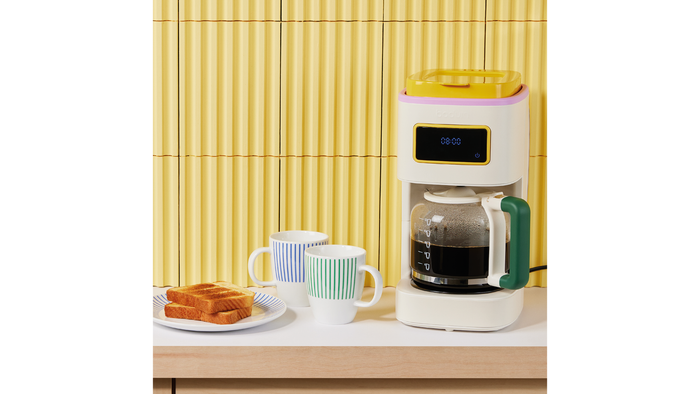
Selections from the MoMA Bodum collection.
“MoMA has quite a strong understanding of the category because it’s such an important part of the MoMA Design Store product selection. It made sense for us to license Bodum, a key vendor for MoMA Design Store because we already have a strong partnership with them.”
In October, The Metropolitan Museum of Art in New York City partnered with Scalamandré (a furniture company) for a collection of wallpapers, fabrics and trims. Also in October, the Met collaborated with furniture company, Eichholtz, to launch The Met x Eichholtz collection. The collection featured furniture, home décor and lighting that drew inspiration from more than 5,000 years of history and culture from around the globe. Josh Romm, head of global licensing and partnerships, The Met, spoke to that partnership and the home décor space.
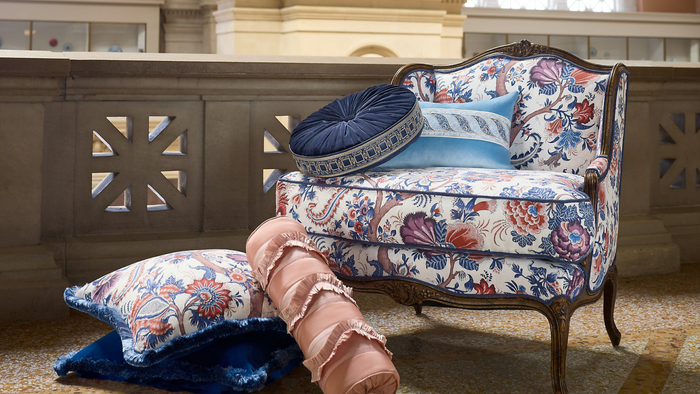
Scalamandré x The Met.
“In 2023, we saw an amazing response to our licensed home products,” says Romm. “The Met x Eichholtz debut garnered such strong initial sales that the brand immediately began work on their second collection which will be unveiled later this year. We are looking forward to High Point Market this spring, where Abner Henry and Ann Gish will be launching new Met-inspired collections. We can’t wait to share what’s in the works very soon.”
“With a collection spanning 5,000 years and over 1.5 million works of art, The Met collection provides unparalleled opportunity for applications in home décor,” continues Romm. “Our licensees have skillfully created product lines that are distinctive and integrate beautifully into a broad range of design aesthetics. Designers and consumers have responded positively to the mix of historical and modern design that our licensees offer, which fuels us to continue exploring new creative possibilities both within our vast collection and the boundless applications of art in the home.”
Going Up-Scale
Anyone who’s watched a “Batman” film, regardless of who was playing the caped crusader, has surely admired Bruce Wayne’s sense of style. Now DC fans can emulate the billionaire’s style in their own homes. In February, Formitalia Group, a global furniture industry brand announced a partnership with Warner Bros. Discovery Global Consumer Products (for the launch of its DCinspired Wayne Enterprises home collection. The Wayne Enterprises label, launched in fall 2022, includes high-end designer fashion, accessories, health/fitness, personal care, electronics, housewares, automotive and even experiences tailored to the aspiring Bruce Waynes of the world. This new partnership introduces an exclusive furniture collection dedicated to the legendary Bruce Wayne, aka Batman.

Bed from the Wayne Enterprises collection.
Robert Oberschelp, head, Warner Bros. Discovery Global Consumer Products, shared some of his thoughts on licensing in the home décor space. He says, despite the fact that home décor is a crowded market, the company actually sees more opportunities than challenges to develop luxury products across this category.
“While character usage has always been at the forefront, we’re seeing global interest increase for understated designs that serve as ‘wink and a nod’ references to world-renowned intellectual property,” says Oberschelp. “Working with Formitalia to expand Wayne Enterprises arrives at a great moment as consumers look to elevate their home furnishings with items that bring character but also luxury and comfort. Offerings specific to this collection are minimalist yet warm and elegant, directly reflecting the tastes of the consumer.
“Partnering with a premier team like Formitalia ensures we can continuously evolve our portfolio of offerings, while bringing favorites like DC’s Bruce Wayne to our fans through sophisticated furnishings,” adds Oberschelp. “There are so many paths we’re exploring across home décor – especially under the Wayne Enterprises label – that I wish I could discuss.”
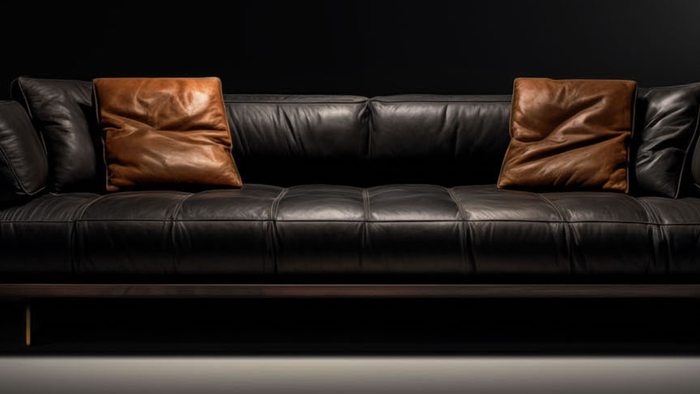
Couch from the Wayne Enterprises collection.
Oberschelp teases that consumers can expect to see more home décor deals from Warner Bros. Discovery Global Consumer Products.
“Beyond furniture and textiles, our teams are working with top-tier brands and retail partners on reinventing the retail experience for our fans,” he says. “We’ll have a lot of exciting news to share later in 2024. Outside of DC and Wayne Enterprises, we’re also exploring bringing new, emerging brands in our portfolio into home décor. Perhaps a certain, global luxury resort chain featured on TV? Stay tuned.”
Fashion brand, The Smiley Company, is known for having licensed collabs across a variety of categories, from phone cases to footwear. And the brand has been active in the home décor space as well. Last year saw designers and architects, Daniel and Michel Bismut, designing a limited-edition collection of furniture, Smiley by Bismut. Now the company has announced the launch of a dynamic range of licensed home décor products, setting the stage for a new era of style and joy in living spaces worldwide. Launches for March include Mr Maria, Maison Deux, Lineasette and IKONIK. The brand is recognized for its iconic Smiley face, so naturally, the aim of Smiley’s home décor line is to interject living spaces with joy and optimism. Whether it’s bedding sets, kitchenware or other home accessories, each product is crafted to spread happiness and foster well-being within the home environment.
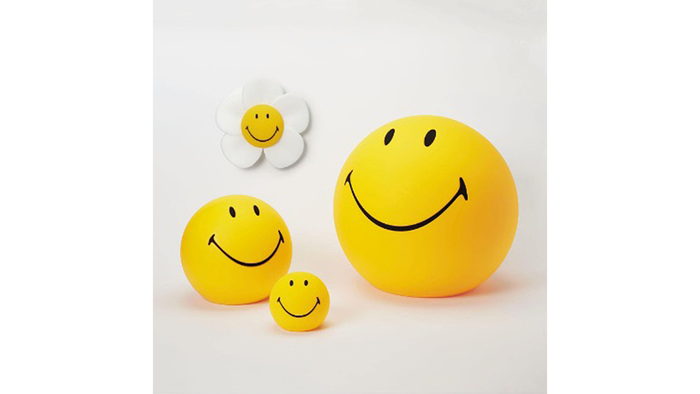
Mr. Maria x Smiley décor.
“We have some great products launching this spring,” says Janet Martin, chief product officer, lifestyle and consumer goods, The Smiley Company. “Get ready to transform your space with our latest designs. Look forward to the exquisite artisan-crafted vases from Lineasette, radiating elegance and charm in every detail. Indulge in the luxurious bedding from Biancoperla, where comfort meets sophistication. Later this year, anticipate the arrival of a stunning dinnerware and accessories range with Pure Table Top, adding the perfect finishing touch to your home décor.”
What’s Trending
It’s clear that while home décor might not be seeing the growth it saw from the pandemic, there’s still interest and enthusiasm from consumers.
“We are observing an optimistic market outlook, and a desire by consumers to beautify the spaces they inhabit,” says Linda Morgenstern, vice president, brand management, Beanstalk. “One prevailing home décor trend is a more personal, layered approach to design that incorporates pieces from different styles and time periods. Rather than the whole-room approach that used to dominate, designers and consumers are hand-picking furnishings from various brands that speak to their personality.
“The Met’s licensees are best-in-class brands known for setting trends,” says Morgenstern. “The historical-meets-modern design aesthetic that unifies this powerful cohort of design houses and gives designers and consumers the opportunity to create sophisticated juxtapositions. As we’ve built the program, we have been thrilled to see the continued trend towards lush wall coverings and swoon-worthy fabrics, warm palettes and rich materials which are in keeping with The Met’s licensed offering. A final trend in home enhancement is the ‘scentual’ element, and Pura, our home fragrance licensee that created bespoke Met fragrances, is at the forefront of digital scent diffusers controlled by our smartphones.”
“I think the trends for licensed home décor are very much in line with overall industry trends,” says Sayetta. “When we look to develop a licensing project in any category, we always stay true to our brand filters, and we find ways to lean into trends as they apply.”
Read more about:
MOMAMetropolitan Museum of ArtBeanstalkWarner Bros. Consumer ProductsMarch 2024GlobalLicense Global OriginalAbout the Author(s)
You May Also Like








